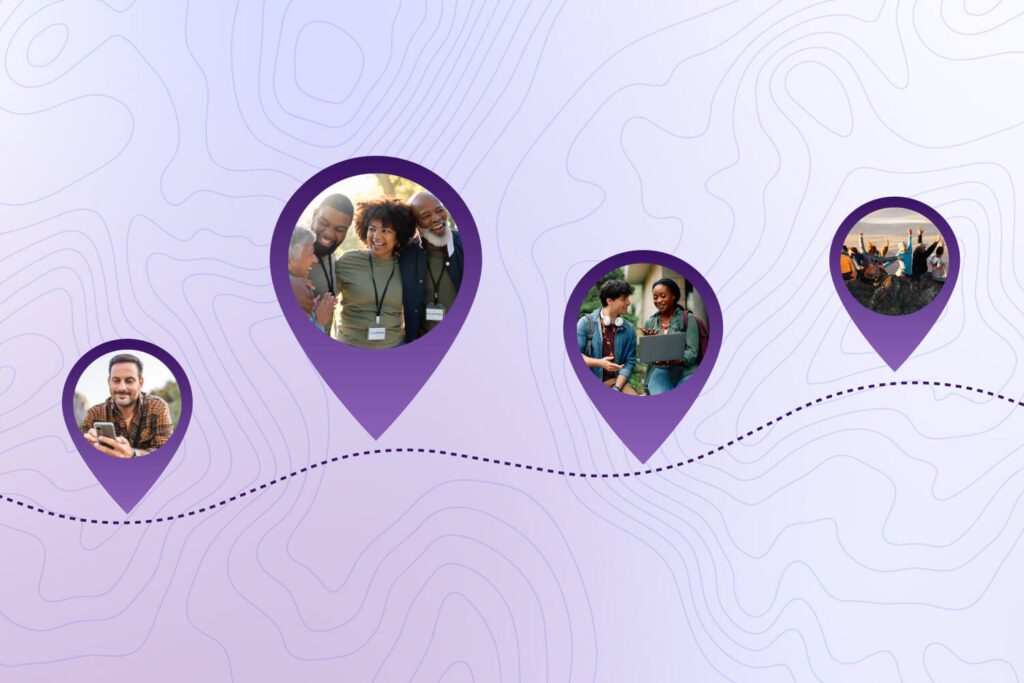9 questions to ask when evaluating case management software

For nonprofit organizations and public agencies, investing in technology like case management software is key to expanding their staff’s capacity and demonstrating their impact to secure more funding. According to the U.S. Government Accountability Office, “a lack of capacity for grant recipients can adversely affect their ability to successfully access, manage, and implement grant programs.”
Technology is at the center of any data-driven organization and systems like case management software are crucial to your organization’s and programs’ success. Having the right technology allows your organization to take control of your data, ultimately increasing your chances of successfully securing and maintaining funding. It allows you to track and standardize data, report on outcomes, and demonstrate impact better than ever before.
But not all technology solutions are created equal. So how do you evaluate and decide on the case management software that’s best for you? We’ve compiled a list of nine questions you can ask potential software providers to help you find your perfect match.
1. How would you describe your solution’s core capabilities?
When selecting technology for case management, data management, and impact reporting, it’s essential that your software shows you a holistic view of your program data. Your staff should be able to easily input data, pull data on individual programs or participants, and run reports. Ensure that the solutions you research have the core capabilities to provide this view.
With the right software at your fingertips, you won’t have to spend hours inputting, organizing, assessing, and reporting your data. Instead, you can apply the time you save to delivering more of your programs to communities in need.
2. What types of data can customers track with your solution?
At the very least, your case management software should allow your organization to see your operations from an end-to-end point of view. That means that you can see data on the entire journey that a program participant goes through from the start of their participation to when they exit. That also means you can see all the inner workings of each program you’re running, how they serve your clients, and how they roll up through your organization.
Collecting, tracking, and managing program data are important ways to measure and quantify the good work your organization does for your community and meet funder reporting requirements. Your data should empower you and your stakeholders to understand how your services affect your program participants. Tracking this data is the only way you can truly understand what’s working overtime, what processes you can improve, and how you can expand your services to better meet your participants’ needs.
3. Is your solution designed specifically for nonprofit organizations and public sector agencies?
Technology is a universal language that has the power to unite, change lives, and optimize your organization’s impact. Partnering with a software solution that’s enthusiastic about working with your organization is key because it allows both parties to excel at what they do while working collaboratively. The shared goal is to serve your community.
Systems designed for nonprofits have the sector’s unique challenges in mind. They ultimately save your staff time by streamlining processes, highlight best practices to empower your participants, and help you control your data to demonstrate your impact to funders and donors.
Systems designed for public sector agencies ensure you can control and track complex data sets for different programs, pull reports to demonstrate the impact of those programs, and meet unique grant requirements—all on a secure platform.
4. How will your case management platform help me demonstrate my organization’s impact to funders?
One of the key reasons to implement technology is to ensure you can track accurate data, allowing you to easily demonstrate impact. Many grant applications require detailed information about the performance of programs. If you are tracking information in disparate or inefficient systems, pulling this information can be challenging. An intuitive, easy-to-use solution will help your organization meet these needs.
Be sure to ask potential technology providers what kind of data tracking and reporting capabilities they offer, and what the process of generating a report looks like, to ensure your staff can easily demonstrate your organization’s impact within your community.
5. How much time is needed to invest in onboarding and implementing your solution?
Established organizations have a lot of important data, often hosted in multiple places. Whether it’s in dated systems, Google Docs, Excel spreadsheets, or maybe even on paper, the amount of data you have will determine how long the implementation process will take.
When shopping for your technology, make sure you’re not just looking for a software provider but a technology partner. As your partner, specialists will be available to assist with data integrations, implementation, training, and more to help you get up and running.
6. Is your solution flexible and easy-to-use?
Your organization likely has a set of processes and procedures that help keep everything organized and running as smoothly as possible. It is essential to find a case management software solution that allows you to tailor it to your unique workflow as it will help streamline your organization’s management and reporting efficiency.
This flexibility will also benefit your organization as your processes change and develop. Look beyond the short term to find a solution that’s flexible enough to grow with your organization.
Plus, user-friendly design makes it easy for your team to adopt your technology systems so you can start saving time on data entry and focusing on service delivery right away.
7. How will you ensure our staff are properly trained? Do you offer ongoing training and support?
Your technology systems are only as strong as your staff’s knowledge of how to use them. Fully trained employees are enabled to implement software with ease. And any time the program is updated, or a new feature is added, it will take much less time out of an employees’ day to quickly learn and adjust if they’ve been properly trained. This ensures their knowledge continues to increase, and they become more valuable over time.
Ask software providers for details on how their training process works and how long it lasts. The knowledge and experience your employees will gain from quality software training will make them more productive at work.
8. Is your solution secure? Will it help my organization meet compliance requirements?
Secure technology ensures that your organization keeps your data safe, secure, and in the right hands at all times. Your biggest responsibility to your clients is to keep their information safe. Along with that, your organization must stay compliant with legal requirements.
With the right technology partner, your data will be hosted safely using secure, cloud-based technology.
9. What do we need to budget for our technology investment long-term?
Finding the right case management solution is essential for fulfilling your mission and maintaining funding, making it worth the monetary investment. However, it’s still important to budget thoughtfully so that you spend every dollar wisely. Discuss pricing with your software provider to determine how much you’ll need to budget in the long run.
Next steps
There are many reasons your organization should invest in technology. It should make your job easier, which in turn makes service delivery more abundant and effective. For nonprofit organizations, the amount of time, money, and resources you will save to invest back into your programs is key. Plus, tracking and understanding your data allows you to demonstrate your impact to potential funders and donors. For public agencies, technology allows you to streamline processes and track accurate data for each program, allowing you to meet grant and compliance requirements with ease.
When selecting a technology provider, choose one that knows and understands your purpose and wants to be a part of it. Find a solution that understands that data is powerful and that it must be handled with care and compassion, helping to propel you to your peak impact.
Interested in a case management solution that meets your unique needs and challenges? Request a demo to learn more about Bonterra case management software.
Work with Bonterra



